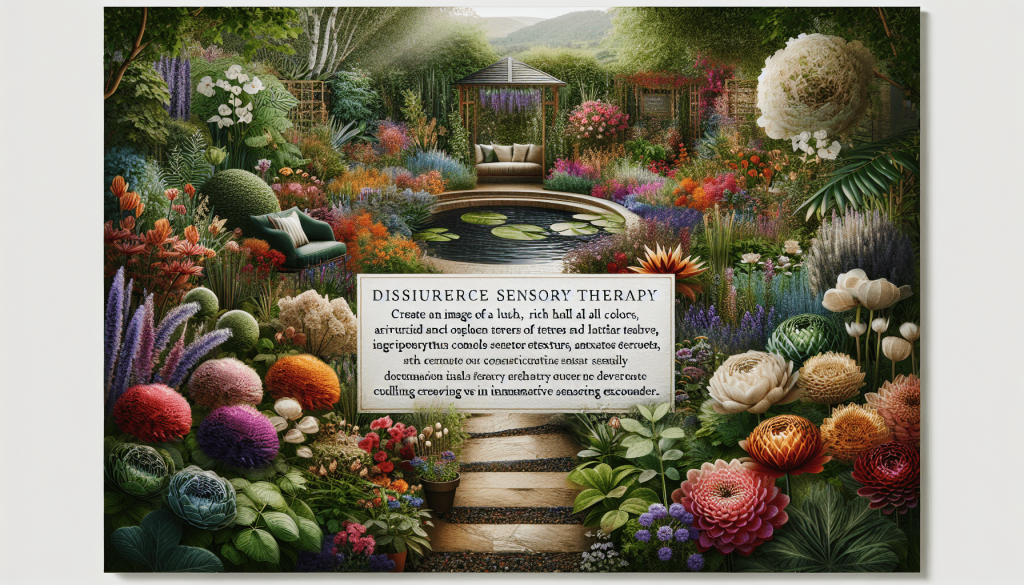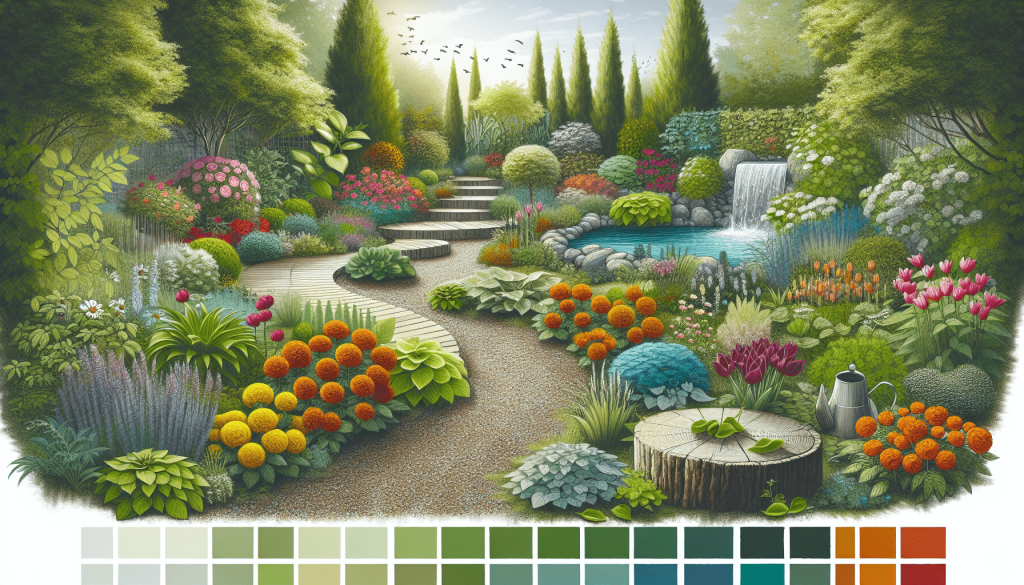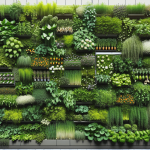This post may contain affiliate links. As an Amazon Associate, we may earn commissions from qualifying purchases.
Creating a sensory garden for therapeutic purposes is an enriching and rewarding endeavor that invites you to blend nature’s splendor with healing elements. In this article, you’ll discover how to design a space that stimulates all five senses, offering a sanctuary for relaxation and mental well-being. From selecting fragrant flowers and vibrant plants to incorporating soothing sounds and tactile features, each element is thoughtfully chosen to promote a holistic sense of peace and rejuvenation. Your sensory garden can become a personal oasis where you, your family, and friends can escape the hustle of daily life and immerse yourselves in nature’s calming embrace. How Can I Create A Sensory Garden For Therapeutic Purposes?
Have you ever found yourself intrigued by the idea of creating a sensory garden but unsure where to start? Imagine having a serene space that captivates your senses and provides therapeutic benefits. Intriguing, right? Let’s explore together how you can cultivate your sensory garden for therapeutic purposes in a way that’s not only mindful but brimming with joy and inspiration.
What is a Sensory Garden?
Before we dig in, let’s take a moment to understand what a sensory garden truly is. A sensory garden is a carefully curated outdoor space designed to stimulate and engage the senses. Unlike your typical garden, it focuses on more than just visual beauty. It brings touch, smell, sound, and even taste into the lush equation, creating a multi-dimensional experience.
Why Create a Sensory Garden?
You might be wondering, “Why should I put in the effort to create such a detailed garden?” Well, sensory gardens offer countless therapeutic benefits. They are exceptional for mental health, providing peace and relaxation. They are especially beneficial for individuals with disabilities, including those with ASD, dementia, or PTSD. Plus, it’s just plain fun!
Therapeutic Benefits By Sense
Sight
A visual feast of colors, shapes, and movement can have a positive impact on your mental well-being. Colorful flowers and interesting sight lines can reduce stress and anxiety.
Touch
Textures and sensations can give tactile stimulation, engaging people with dementia or developmental disabilities. Soft leaves, rough bark, and spiky foliage can make the experience dynamic.
Smell
The fragrant aroma of flowers like lavender and jasmine can be incredibly soothing, making aromatic plants a staple in sensory gardens.
Sound
Wind chimes, rustling leaves, and water features can provide gentle auditory stimulation, creating a calming environment for stress relief.
Taste
Edible plants like herbs and berries can offer flavorful delights and motivate interactions, especially for younger children or anyone with sensory processing issues.

Steps to Create Your Sensory Garden
Creating your sensory garden doesn’t have to be overwhelming. Let’s break it down into manageable steps, each bringing you closer to your therapeutic oasis.
1. Planning and Layout
As they say, “measure twice, cut once.” Before you start digging, it’s crucial to plan. Consider your space’s existing features and limitations. Do you have shaded or sunny areas? Any existing trees or water features?
Things to Consider:
| Aspect | Considerations |
|---|---|
| Location | Proximity to your home, accessibility, safety |
| Budget | Costs for plants, soil, tools, ongoing maintenance |
| Climate | Plant hardiness zones, seasonal changes |
| Users | Age and abilities of who will use the garden |
2. Choosing Your Plants
Selection is vital. You want to incorporate plants that engage all five senses. The key is diversity and sustainability. Always consider native plants that adapt well to your local climate.
Plants for Sight
Choose a variety of colors and heights.
- Flowers: Sunflowers, marigolds, petunias
- Shrubs: Hydrangeas, rhododendrons
Plants for Touch
Select plants with various textures.
- Fuzzy: Lamb’s ear, velvet sage
- Prickly: Echinacea, globe thistle
Plants for Smell
Opt for aromatic plants.
- Fragrant flowers: Lavender, roses
- Herbs: Rosemary, mint, thyme
Plants for Sound
Consider elements that produce soft noise.
- Grasses: Bamboo, fountain grass
- Water Features: A small fountain, trickling stream
Plants for Taste
Include edible and safe-to-eat plants.
- Herbs: Basil, chives
- Fruits: Strawberries, raspberries
3. Additional Elements
Plants are just the beginning. A sensory garden can include many elements that enhance the sensory experience.
Water Features
Small ponds, fountains, and streams can make delightful sounds and provide visual tranquility.
Seating Areas
Benches or seating nooks invite you to pause and take in the beauty around you.
Pathways
Gravel, wood chips, and stone paths offer a unique tactile experience as you wander through your garden.
Wind Chimes and Mobiles
These can add a melodic touch to the breeze.
Maintaining Your Sensory Garden
Garden maintenance is where some of the true therapy happens. Tending to your garden can offer you a peaceful routine. Let’s discuss a few tips:
Regular Watering and Weeding
Keep the soil moist but not soggy. Make routine weeding a meditative practice, focusing on pulling out negativity along with the weeds.
Seasonal Pruning
Pruning keeps plants healthy and ensures that their growth remains uncluttered, promoting better air circulation and beauty.
Soil Health
Healthy soil contains the nutrients that your plants need. Use compost and mulch to maintain soil fertility and moisture.

Accessible Design Features
If your garden is intended to be accessible for people with mobility issues or disabilities, some thoughtful planning can go a long way.
Raised Beds
These make gardening activities accessible to those who find it difficult to bend or kneel.
Wide Pathways
Paths that are wide enough for a wheelchair ensure that everyone can explore the garden.
Sensory Stations
Design areas focusing on one sense. Create a tactile table or aromatic herb corner for focused experiences.
Getting the Community Involved
A sensory garden can be more than a personal retreat; it can be a community treasure. Invite neighbors, local school groups, or community centers to contribute. A communal project builds stronger bonds and enriches everyone involved.
Workshops
Organize workshops on planting, weeding, or building simple features like birdhouses.
Sharing the Harvest
Send the harvest from your sensory garden to local food banks or community kitchens.
Volunteering
Encourage volunteering for maintenance tasks. It’s amazing how many people are willing to help when it involves a shared space.
Personal Touches
Every garden reflects the uniqueness of its creator. Add personal touches to make your garden an authentic extension of yourself:
Memory Stones
Engrave stones with the names of loved ones or favorite quotes.
Art Pieces
Install sculptures, mosaics, or garden statues to spark creativity and joy.
Journaling Spots
Create little nooks where you can sit and journal your thoughts, capturing your mind’s musings and emotions.
Conclusion
So, how do you get from a patch of dirt to a serene sensory garden for therapeutic purposes? Start with small steps, lots of planning, and a heap of enthusiasm. Embrace the process as an adventure. Enjoy each stage, from layout schemes and plant shopping to digging and planting. Your sensory garden isn’t just a therapy project; it’s a labor of love, a personal sanctuary, and a gift to yourself and your community.
Now grab that shovel, don your gardening gloves, and get ready to breathe life into your very own sensory wonderland. Your therapeutic garden awaits you!








